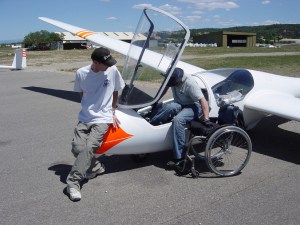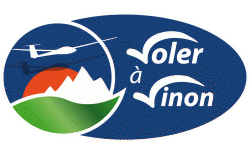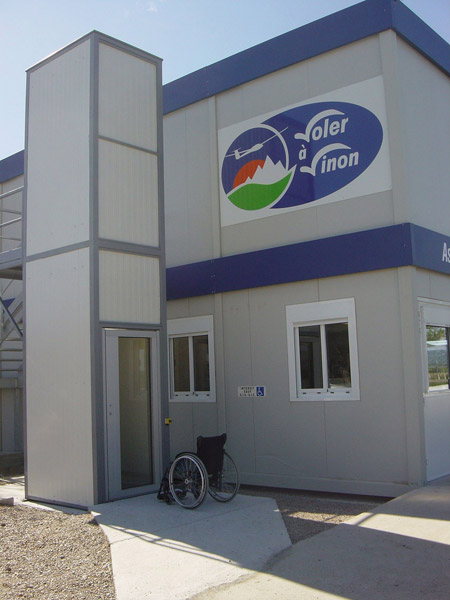The Handi-sport Committee is in charge of promoting handi-flying. “Fly-by-hand” (aircraft flown with the hands only ) is the best-known form of handi-flying.
The A.A.V.A. offers to welcome handicapped pilots, and takes an active part in the launching of this activity, the aim being to make the practice of our sport better-known and easier among handicapped people.
A greater consideration is given everywhere to them and increasing numbers of people with a limited capacity to move can be found in the clubs. Some of them are licensed pilots. Tests are carried out with non-seeing or non-hearing people.
The A.A.V.A. has completed two initial trainings of handicapped pilots, and two cross-country flight qualifications have been granted.
What does handicap mean?
Handicap may take several forms and is specific of each person. However, it can be classified in different categories:
- physical handicap
- loss of mobility
- loss of hearing
- loss of sight
- mental handicap
When flying is concerned, certain types of handicap do not allow people to maneuver in the air. Consequently, their chances of becoming pilots are few.
Generally speaking, only people with so-called “limited mobility” stand a good chance to become licensed pilots (thus, able to fly single-seaters). People having lost hearing or sight may be under certain conditions, allowed to learn to fly but may not be cleared to go solo.
People suffering from mental handicap may be allowed to learn, with a specialized doctor’s clearance. However, they will always fly with instructor’s tuition.
Gliders with dedicated devices
Dedicated to people with “limited mobility”, the A.A.V.A. has, in its fleet, two two-seaters ASK21s for initial training, a Duo-Discus for cross-country flight schooling and a C101 Pégase single-seater, allowing full schooling from ab initio to long range flights.

The A.A.V.A. has also a bedroom with full handicapped-oriented equipment, and an escalator to provide easy access to the briefing and flight simulator rooms.






